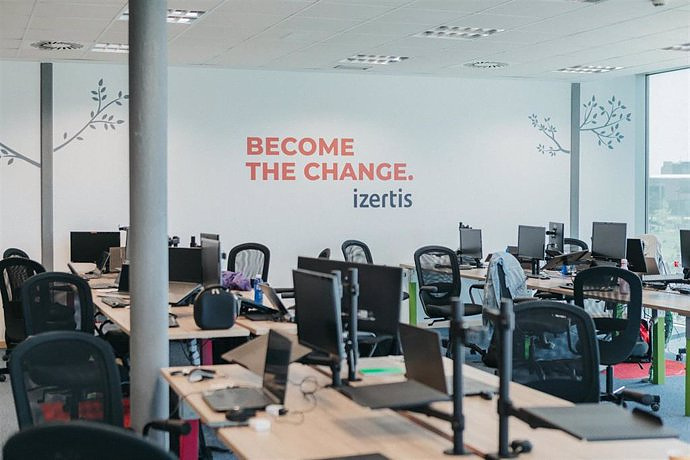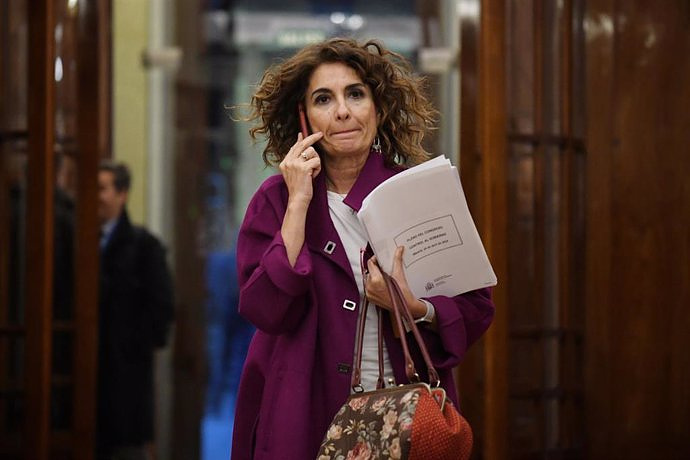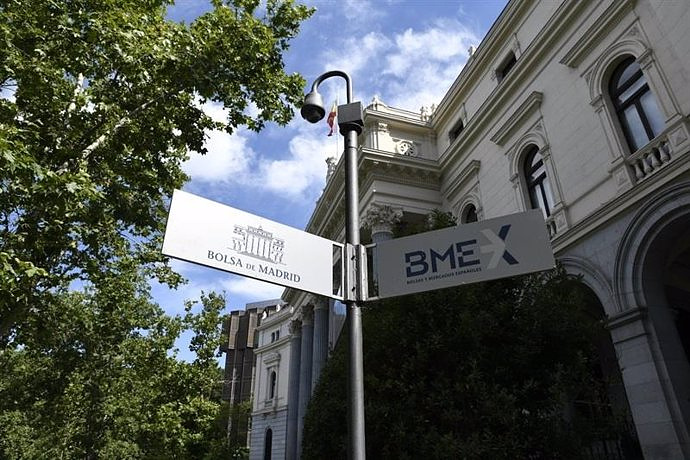the human services committee has unanimously decided that drug policy should be looked into. It is at the moment. When it comes to drugs, there is an appalling gap between the rhetoric and the reality. The debate has long been characterized by the mere symbolic policies. The parties have been competing to promote ”a drug-free society”. At the same time, there has been a lack of pragmatic, evidence-based work, in order to reduce the damage to the patients, their families, and the community. In the absence of a knowledge-based strategies in Sweden has been handfallet facing a number of issues, including international comparisons, and high and rising narkotikadödlighet.
the Decision to investigate the drug policy is, I hope, a sign of the burgeoning realization that a change is needed. The drug phenomenon is complex, and lends itself poorly to a political doctrine. The actions that sound good, could have disastrous consequences in the real world. An example from everyday life: It may sound like a good drug addiction patients should be detoxified and sent to ”clean” it. However, the reality is that such an approach could lead to a sharp increase in the risk of överdosdöd after the patient is discharged, then the patient loses tolerance to the lethal drogeffekter.
This is the need of the knowledge from the fields as diverse as pharmacology, neuroscience, sociology, and criminology. An important task for governments would be to provide a forum for such interdisciplinary knowledge, and to use it as a base from which a new, knowledge-based drug policy. A good example is close to home, in the form of the Norwegian Senter for rus - og avhengighetsforskning (Seraph).
When it comes to controversial issues, you can usually find the individual research papers that seem to support different points of view.
the Criminalization of private use is one of those issues that is perhaps best placed in the knowledge-based analysis. Sweden was doing its own use, a punishable offence in 1988, and 5 years later, introduced the term of imprisonment of up to 6 months in the scale of punishment. Also, if commuted, rarely are the police, thus, the power to tvångsprovtagning. It's said to be the primary prevention, that is to say, with the objective of initiating the operation, and secondary prevention, that is to say, the people who set up a mill, put an end to it.
. If the intended effect? Are there negative side effects? How is, in the end, the risk–benefit balance? Only if this is positive, it is accepted as a medicinal product. The remedy is not to be higher than that of soten. In a similar line of reasoning is, of course, just as important, when it comes to the law. As beroendeläkare, we will make sure that the drug is harmful and should remain illegal.
However, we do think we are seeing a number of the negative effects that their own use is criminalized.
1
Barriers to treatment.
A significant minority of patients, between 10% and 25%, develops a addiction, a disease in which the use continues despite knowledge of adverse consequences. These patients are in urgent need of an evidence-based treatment interventions for addiction, but also diseases such as hepatitis C.the action that will get them to be afraid to seek medical help is counter-productive. Many years of experience to become a part of the community as a result of his own use is not helpful in the behandlingsarbetet, which is based on a level of trust in arbetsallians. And sometimes the consequences could be instantly disastrous, that is, when the user pulls in order to alert the ambulance for a drug overdose, because they are afraid of him.
2
that Stigma. It is mostly the young people who are the subject of the tvångsprovtagning, and criminal prosecution. These measures have a strong socio-economic bias. The well-off who takes a line of cocaine at a private club in the process are the detection risk. The risk is even higher for young people who don't have anywhere to go, and that moving in the street are affected by its use. This socio-economic bias is bad enough, but it is now becoming even worse. We are faced with major challenges in the integration of young adults with immigrant backgrounds in the Swedish labour market, and social norms. Many of these young people are labelled as criminals due to the fact of his own use is not likely to foster integration. Sweden has on many occasions criticised the number of class and racial prejudices in the american legal system. It is noteworthy that it appears to be blind in the face of a similar situation at home.
3. the Consumption of resources. drogtesta, and the prosecution of users is becoming more and more of the resources of the fund. A 20-year period, the number of people who brottsanmäls for their own use, has grown from approximately 2,000 to approximately 50 .00 per year. Many of the returns, which means that resources are devoted to the prosecution of the persons for whose use are well known, and obviously not put an end to the action.
as These crimes might be seen in the statistics from the police, where they will have a high clearance rate. However, the question is what is the alternative benefits that could be achieved with the same resources, that is, in a situation in which the police are finding it hard to cope-up the heinous crimes, while the health service is not sufficient to provide the beroendepatienter evidence-based treatment.
that the risk–benefit balance should be positive in the light of the above, the samhällsbiverkning would be the positive effects of this will need to be robust and the effect huge. There is support for this to be the case? The debate is not seldom the surest claims that the judiciary's action against the private mills have a very positive effect, and should be based on strong scientific evidence. It is said, for example, the Mats Löfving, the head of the police's National operations department. In fact, the lack of this is simply rooted in the reality of the situation.
it is important, Therefore, that the current state of knowledge is analysed taking into account the totality of the available scientific data. Such an analysis was carried out in 2016 by a forskarkommission on behalf of the the Lancet, one of the world's leading medical journals. The conclusion was clear-cut. A number of the recommendations was the decriminalisation of the private use, the top of the list.
in Order to not be so firm as the hard-line advocates, we would like to point out that the research on these issues is a difficult one, and that the conclusions are based on the countries with other conditions of origin, such as the united states, Portugal, and the Czech republic. It is, therefore, important to carefully analyse whether the conclusion is also valid for the us. There are some special circumstances in our country, which will lead to a different conclusion? We are not sure about it, but it is a knowledge-based drug policy can only be shaped, then we have the solutions to the issues at hand.
So, it is complicated, it is, in reality, beyond the slogans. However, it was not later than the day after the socialutskottets a decision until the minister for social protection, ms Lena Hallengren (S), the decriminalization of the private use should not be the subject of future investigation. This is a serious error of judgement. From the American society for addiction, we will require that a significant part of the drug policy will be investigated and that the investigation may guide the future of the position.
Link to a graphic

 Exploring Cardano: Inner Workings and Advantages of this Cryptocurrency
Exploring Cardano: Inner Workings and Advantages of this Cryptocurrency Seville.- Economy.- Innova.- STSA inaugurates its new painting and sealing hangar in San Pablo, for 18 million
Seville.- Economy.- Innova.- STSA inaugurates its new painting and sealing hangar in San Pablo, for 18 million Innova.- More than 300 volunteers join the Andalucía Compromiso Digital network in one month to facilitate access to ICT
Innova.- More than 300 volunteers join the Andalucía Compromiso Digital network in one month to facilitate access to ICT Innova.-AMP.- Ayesa acquires 51% of Sadiel, which will create new technological engineering products and expand markets
Innova.-AMP.- Ayesa acquires 51% of Sadiel, which will create new technological engineering products and expand markets Puigdemont believes that Sánchez can present a question of trust and "clarify all doubts"
Puigdemont believes that Sánchez can present a question of trust and "clarify all doubts" RELEASE: Automation Anywhere names Tim McDonough director of marketing
RELEASE: Automation Anywhere names Tim McDonough director of marketing RELEASE: Terra Drone, Unifly and Aloft launch UTM development for AAM aimed at global markets
RELEASE: Terra Drone, Unifly and Aloft launch UTM development for AAM aimed at global markets STATEMENT: The construction of the Gudauri tunnel in the Kvesheti-Kobi Highway Project of the North-Su Corridor has been successfully completed
STATEMENT: The construction of the Gudauri tunnel in the Kvesheti-Kobi Highway Project of the North-Su Corridor has been successfully completed How Blockchain in being used to shape the future
How Blockchain in being used to shape the future Not just BTC and ETH: Here Are Some More Interesting Coins Worth Focusing on
Not just BTC and ETH: Here Are Some More Interesting Coins Worth Focusing on Retrópolis brings the golden age of video games and computing to the UPV
Retrópolis brings the golden age of video games and computing to the UPV Looking for video games that value the neighborhoods of Valencia
Looking for video games that value the neighborhoods of Valencia UPV researchers improve the efficiency of air conditioning systems using a geothermal heat pump
UPV researchers improve the efficiency of air conditioning systems using a geothermal heat pump València is committed to citiverse and smart tourism to be "the reference technological hub of the Mediterranean"
València is committed to citiverse and smart tourism to be "the reference technological hub of the Mediterranean" A million people demonstrate in France against Macron's pension reform
A million people demonstrate in France against Macron's pension reform Russia launches several missiles against "critical infrastructure" in the city of Zaporizhia
Russia launches several missiles against "critical infrastructure" in the city of Zaporizhia A "procession" remembers the dead of the Calabria shipwreck as bodies continue to wash up on the shore
A "procession" remembers the dead of the Calabria shipwreck as bodies continue to wash up on the shore Prison sentences handed down for three prominent Hong Kong pro-democracy activists
Prison sentences handed down for three prominent Hong Kong pro-democracy activists ETH continues to leave trading platforms, Ethereum balance on exchanges lowest in 3 years
ETH continues to leave trading platforms, Ethereum balance on exchanges lowest in 3 years Investors invest $450 million in Consensys, Ethereum incubator now valued at $7 billion
Investors invest $450 million in Consensys, Ethereum incubator now valued at $7 billion Alchemy Integrates Ethereum L2 Product Starknet to Enhance Web3 Scalability at a Price 100x Lower Than L1 Fees
Alchemy Integrates Ethereum L2 Product Starknet to Enhance Web3 Scalability at a Price 100x Lower Than L1 Fees Mining Report: Bitcoin's Electricity Consumption Declines by 25% in Q1 2022
Mining Report: Bitcoin's Electricity Consumption Declines by 25% in Q1 2022 Oil-to-Bitcoin Mining Firm Crusoe Energy Systems Raised $505 Million
Oil-to-Bitcoin Mining Firm Crusoe Energy Systems Raised $505 Million Microbt reveals the latest Bitcoin mining rigs -- Machines produce up to 126 TH/s with custom 5nm chip design
Microbt reveals the latest Bitcoin mining rigs -- Machines produce up to 126 TH/s with custom 5nm chip design Bitcoin's Mining Difficulty Hits a Lifetime High, With More Than 90% of BTC Supply Issued
Bitcoin's Mining Difficulty Hits a Lifetime High, With More Than 90% of BTC Supply Issued The Biggest Movers are Near, EOS, and RUNE during Friday's Selloff
The Biggest Movers are Near, EOS, and RUNE during Friday's Selloff Global Markets Spooked by a Hawkish Fed and Covid, Stocks and Crypto Gain After Musk Buys Twitter
Global Markets Spooked by a Hawkish Fed and Covid, Stocks and Crypto Gain After Musk Buys Twitter Bitso to offset carbon emissions from the Trading Platform's ERC20, ETH, and BTC Transactions
Bitso to offset carbon emissions from the Trading Platform's ERC20, ETH, and BTC Transactions Draftkings Announces 2022 College Hoops NFT Selection for March Madness
Draftkings Announces 2022 College Hoops NFT Selection for March Madness























